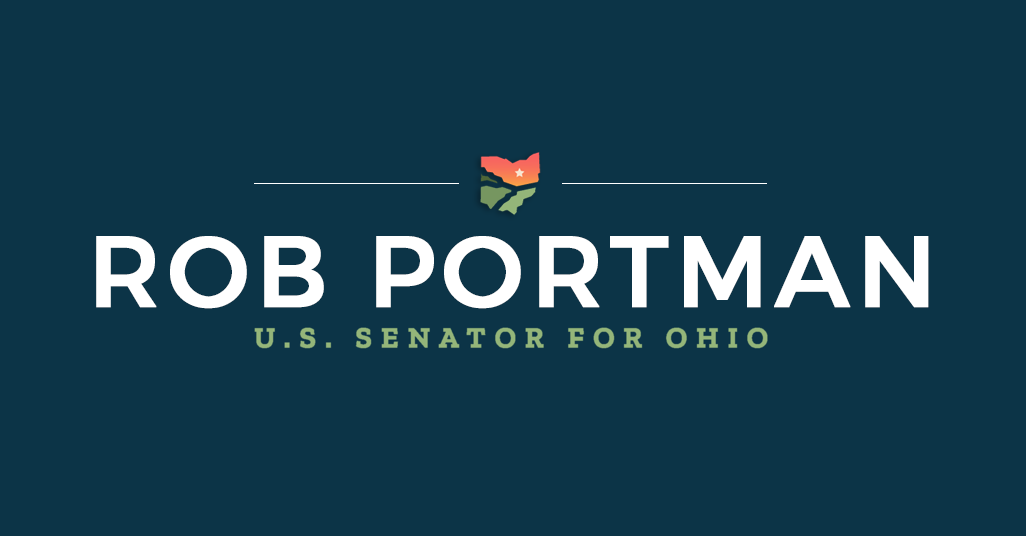Source: United States Senator for Ohio Rob Portman
November 16, 2021 | Portman Difference
The bipartisan Infrastructure Investment & Jobs Act (IIJA) makes an historic investment in America’s core infrastructure needs – roads, bridges, ports, broadband, water infrastructure, and other important assets. The bill, which has been endorsed by more than 100 industry associations, trade groups, and unions, will create jobs, increase productivity, and pave the way for decades of economic growth and prosperity – all without raising taxes or increasing inflation.
Senator Portman played a key role in crafting the legislation, which President Biden signed into law on Monday, that will address specific infrastructure needs across Ohio.
Here is how the bill could benefit Northwest Ohio:
Roads and Bridges
The bipartisan IIJA provides $110 billion in new funding for roads and bridges, including $9.2 billion that will come directly to Ohio to help with roads and highways and $483 million to help with Ohio bridges.
In addition, Ohio projects will also be able to apply for tens of billions in additional competitive grant funding opportunities, including $12.5 billion in the new the Bridge Investment Act, $5 billion in a new National Infrastructure Project Assistance grant program to help with large projects, $7.5 billion in the RAISE (formerly BUILD) grant program, and $8 billion in the Infrastructure for Rebuilding America (INFRA) grant program.
This funding could be used to help fund projects like the I-475/20A Interchange project, which is in the final stage of a three stage Ohio Department of Transportation plan to widen and update interchanges to I-475. This phase will also widen I-475 from Airport Highway to US 24 and widen the bridge over Monclova Road.
The bipartisan infrastructure legislation also provides a 10 percent set aside within the surface transportation block grant program to states for recreational trails and other transportation alternatives. This provision will provide $7.2 billion nationally over the next five years. This funding– in addition to competitive grants like the RAISE grant program – could go toward projects like the Sandusky Bay Pathway, a 12-mile boardwalk and bike path that will span the city’s waterfront spanning from downtown Sandusky to Sheldon Marsh, connecting Cedar Point and the new Cedar Point Sports Center Project.
Airports, Ports and Waterways
The infrastructure bill provides $2.25 billion over five years for the Port Infrastructure Development Program (PIDP) through the U.S. Department of Transportation’s Maritime Administration. This competitive grant program is the main source of federal funding for port infrastructure needs and provides funding for planning, operational and capital financing, and project management assistance to improve port capacity and financing for ports like the Toledo-Lucas County Port Authority.
The law also provides a total of $17 billion for the Army Corps of Engineers to address their infrastructure priorities, support coastal resiliency and flood mitigation. For example, projects such as the construction of a new lock at the Soo Locks, restoring jetty structures, and dredging could receive funding through this legislation.
The IIJA also includes $25 billion in grant funding to support our nation’s airports. The Eugene F. Kranz Toledo Express Airport is working on numerous infrastructure improvement projects that could utilize this funding.
The law provides $1 billion in additional funding for the Great Lakes Restoration Initiative (GLRI), which is used to improve the health of Lake Erie by funding projects like the Howard Marsh Metropark.
Broadband
The IIJA includes $65 billion for broadband, including more than $42 billion to states, U.S. territories, and the District of Columbia via block grants. This is consistent with Senator Portman’s bipartisan BRIDGE Act proposal to help close the gap in access to reliable high-speed internet that persists in certain communities. Ohio is set to receive hundreds of millions in broadband deployment dollars that the state could use to help expand access throughout Northwest Ohio, making a difference in the lives of students, workers, and families.
Water Infrastructure
The law includes the bipartisan Drinking Water and Wastewater Infrastructure Act and provides $23.4 billion for the Drinking Water and Clean Water State Revolving funds, which help finance a variety of water infrastructure projects such as stormwater projects and the construction of water treatment facilities. Additionally, the bill provides $10 billion to address PFAS and a historic $15 billion for lead service line replacement. About one-third of Toledo’s 90,000 water service lines are still lead.
###
